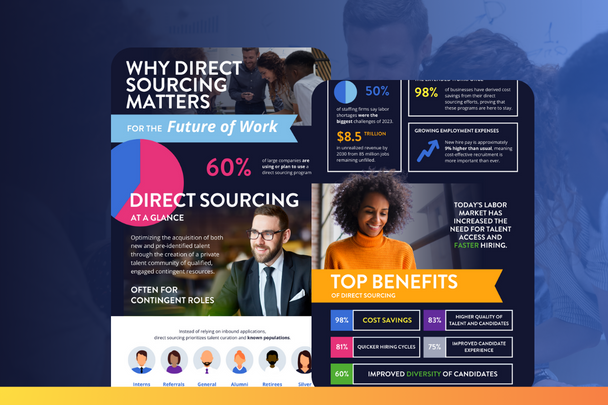Spring has sprung! Warmer, brighter days are ahead. After enduring a long year of isolation and monotony, increased vaccine distribution and updated travel guidelines offer renewed optimism for a return to normalcy. While we cautiously navigate a fourth surge and the new variants of the virus, many investors are betting on increased consumer spending. In a post-pandemic era, some are even banking on a boom to rival the Roaring Twenties!
However, the COVID-19 pandemic has indubitably created some changes that are here to stay. Mandatory lockdowns accelerated the Digital Transformation movement, forcing many businesses into a fight-or-flight decision. Many opted to adapt and stay nimble, because remaining complacent would mean falling behind. That’s not an outcome many businesses are willing to accept.
The nature of work is changed. Rapidly altered by the pandemic, it’s reshaping the global economy. McKinsey Global Institute’s Future of Work after COVID-19 report highlights three key accelerated trends: remote work, e-commerce, and automation. With the end of the pandemic in sight, it’s time to spring clean. That includes an evaluation of your work processes. Is your organization set up to succeed in the future of work? In today’s fierce competition for top talent, having the right HR systems in your tech stack is crucial to your organization’s success. If you’re looking to streamline your HR tools, these three best practices can help.
3 Best Practices for Streamlining HR Systems
1. Reevaluate your tech stack.
First, take inventory of your HR systems. Then, consider how they help further your strategic goals. Lockdowns shifted businesses into restart mode, inevitably restructuring corporate IT infrastructures at unprecedented speed and scale. When it comes to fulfilling customer and employee needs, digital solutions are now integral. Many industries continue to learn and embrace these new technologies and modern processes. In order to survive, they must. We now know business functions traditionally conducted in-person, such as HR, sales, and consulting, can be entirely virtual. HR professionals are recruiting and onboarding candidates through a wholly digital process. By relying on virtual communication platforms and HR systems, they can gather, manage, and share candidate and employee data. With modern tools, they can do so quickly and securely.
Thinking ahead to the post-pandemic era, reopenings are likely to propel businesses into growth mode. Company relaunches and increased economic activity are paving the way for more hiring. So as US job openings hit a two-year high in February, your goals and priorities may begin to shift. Employing the right team and talent technology can take you from surviving to thriving! Does your business plan to operate fully remote? Perhaps you plan to incorporate a hybrid model? Are you adding to your contingent labor plans? How much does your company value employee development? As your business continues to grow, the first step to assessing your HR tech stack is knowing your HR goals. So, are all your management resources covered? If your HR systems don’t serve your everchanging needs, you may have already outgrown them.
2. Leverage APIs and SSO.
The pandemic accelerated cloud-based HR platform adoption by 26%, refocusing HR on the need for workforce planning data and analytics. Managing talent and facilitating remote work, HR and IT became the two most important departments to a company’s survival during lockdown. However, despite continuing investments in HR technology, more than 80% of employers struggle with user adoption.
From a user’s perspective, there is nothing more inefficient than having disconnected systems. In addition to a steep learning curve or imperceptible benefits, the most common pain point is having too many logins and systems to remember. One of the easiest ways to increase adoption rates is to incorporate single sign-on (SSO), which permits a user to access multiple applications using one set of login credentials. Not only does SSO provide convenience to users, businesses benefit from reduced hack risk since login credentials aren’t hosted on your site. Another way to increase user adoption and streamline your HR systems is to connect them using application program interfaces (APIs). To help mitigate the risk of errors, APIs allow software programs to interact with each other and share data. This reduces development time and cost. You can work with your HR tech partners to connect SSO and APIs to your use case.
3. Nurture your human cloud.
As digitization continues to fuel productivity, the economy is progressively becoming on-demand. In a world where everything lives at their fingertips, consumers expect instant gratification. Meaning, they are conditioned to get what they want, when they want it. In the realm of HR, employers and hiring managers expect recruiters to fill open roles immediately. However, attracting the ideal candidate is harder than you might think. Given the wealth of talent in today’s market, candidates are looking for the very best offer. Employer benefits, including flexibility, can make a big difference in assuring your job offer is competitive.
Communication is also key. When it comes to your HR systems, it is essential to take time to ensure your candidate profiles are up-to-date and complete. A full database doesn’t necessarily indicate a good database. If the information stored is outdated or incomplete, it’s not helpful. To refresh your talent pool, employ recruitment marketing and direct sourcing strategies. This way, you are always attracting new and relevant talent. Similarly, continual engagement assures pre-qualified talent stays connected to your brand.








